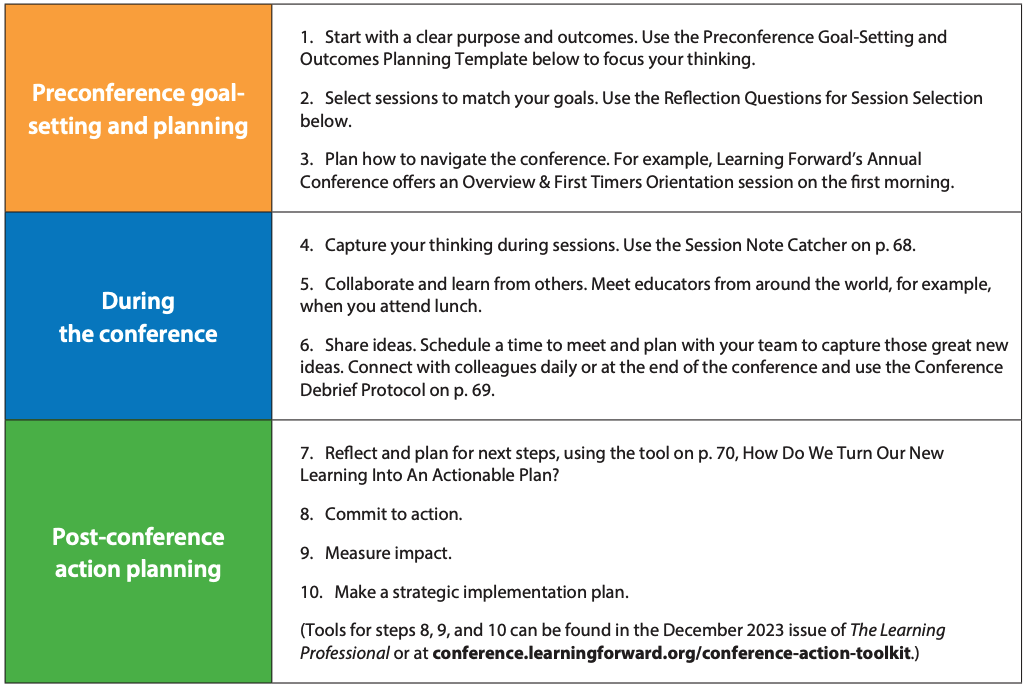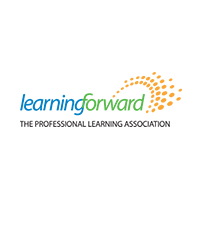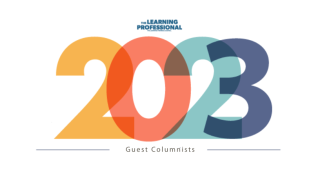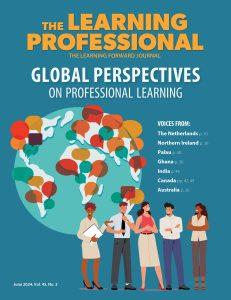At Learning Forward’s Annual Conference, educators engage in rich conversations with like-minded colleagues, learn new strategies, and access resources and materials relevant to their role. Participants often experience excitement, hope, and renewed energy or passion. However, a sense of overload can bring on anxiety, frustration, and even a bit of fear. What do you do with all this newly acquired information and energy once the conference is over?
Learning Forward developed a tool kit to support individuals and teams in organizing and making sense of everything learned at a conference — from the keynote speakers, session presenters and facilitators, other educators, and vendors. The tool kit includes actionable steps you can take before, during, and after the conference so that you can apply what you’ve learned to the work. While it was designed for Learning Forward’s Annual Conference, the tool kit is free and can be used for any conference or learning event.
In the October 2023 issue of The Learning Professional, on pgs. 67-70, we highlight tools to use before and during the conference. Post-conference tools will be featured in the next issue.
Learning Forward’s Taking Action Toolkit helps make sure no one leaves their learning at the door when they depart from Washington, D.C. this year. The tool kit is divided into three sections to support your learning journey:
- Pre-conference goal setting and planning: This section of the toolkit provides a guided goal-setting tool to focus your learning. It can even help you narrow down which sessions to attend if you are on the fence.
- Reflection tools to use during the conference: Reflection and connection are essential for transferring learning into action, but attending sessions back-to-back may not leave much time for that work. The toolkit includes resources to help make it easier. The session note catcher can help guide your note taking so you can make connections with your goals and begin thinking about the impact on your school. A protocol for debriefing, which can be used at the end of each day or after the conference, supports reflection. Because we learn more when many voices and perspectives are involved, it’s helpful to debrief with others. If you don’t have a school or district team to debrief with, why not invite peers you have met in sessions to reflect together?
- Post-conference action planning: After a conference, attendees often find that their grand ideas fall flat or get lost in the daily routine. The resources in this section can help you establish an action plan and stick to it with a 30, 60, and 90-day progress checklist and a comprehensive, strategic plan for turning your learning into action.
This table appears in the October 2023 issue of The Learning Professional, showing the steps we recommend before, during and after the conference. This and the entire tool kit can be downloaded or used online by accessing it here from Learning Forward’s conference website.








